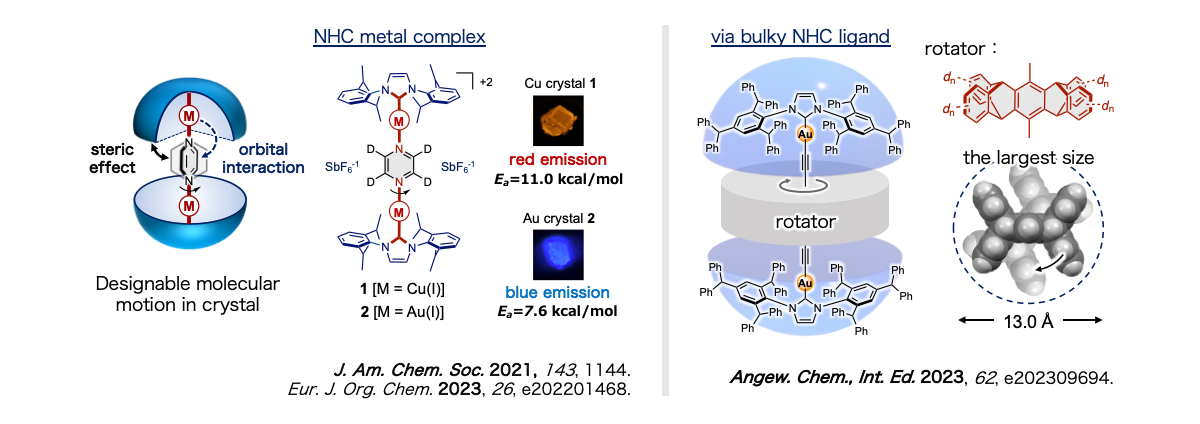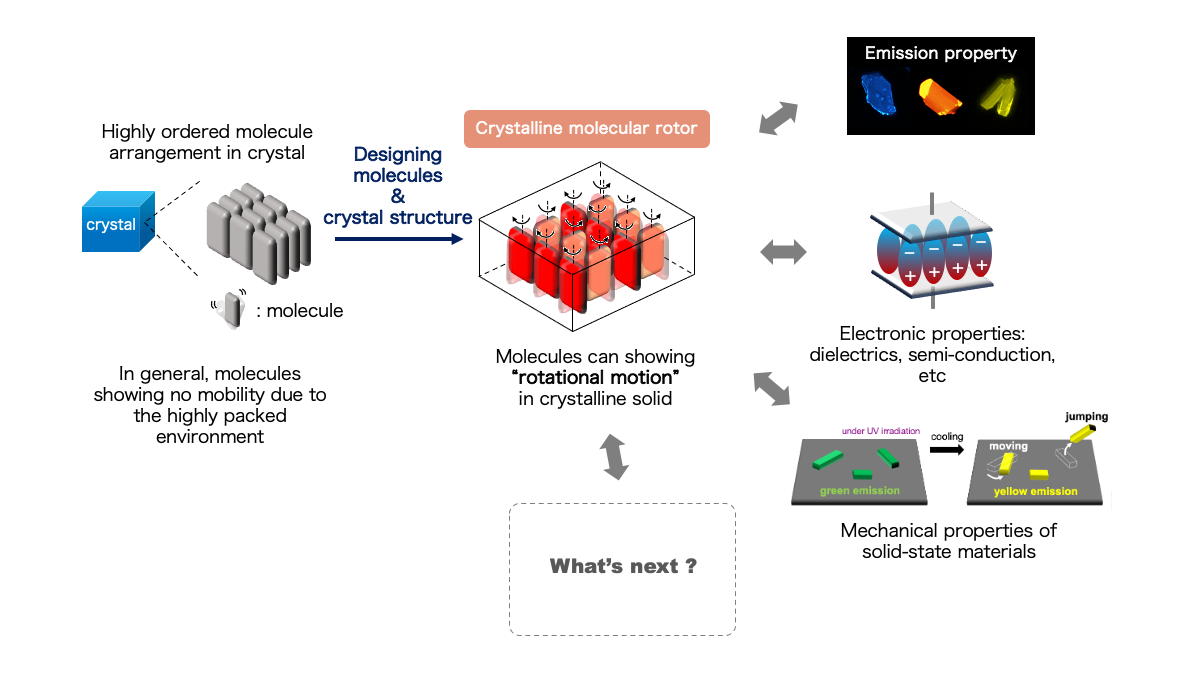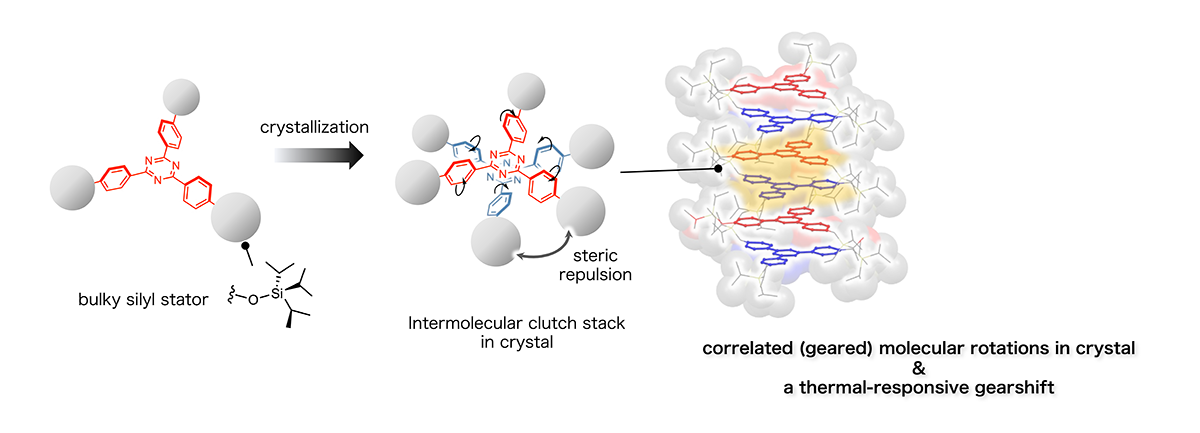RESEARCH
Design of crystalline molecular rotors via N-heterocyclic carbene (NHC) oranometallic complexes

Organometallic complexes constructed from organic molecules and metals can create a diverse range of molecular structures and electronic environments. We have developed a new crystalline molecular rotor that allows for semi-rational control of molecular rotation within the crystal, based on metal complexes with N-heterocyclic carbene (NHC) ligands. Additionally, the luminescent properties exhibited by these crystals can be controlled by molecular rotation (as seen in the top left figure). More recently, through creating bulky structures with NHC compounds, we have succeeded in rotating the largest size of molecule within a crystal, demonstrating rotational motion in a solid state (as seen in the top right figure).



